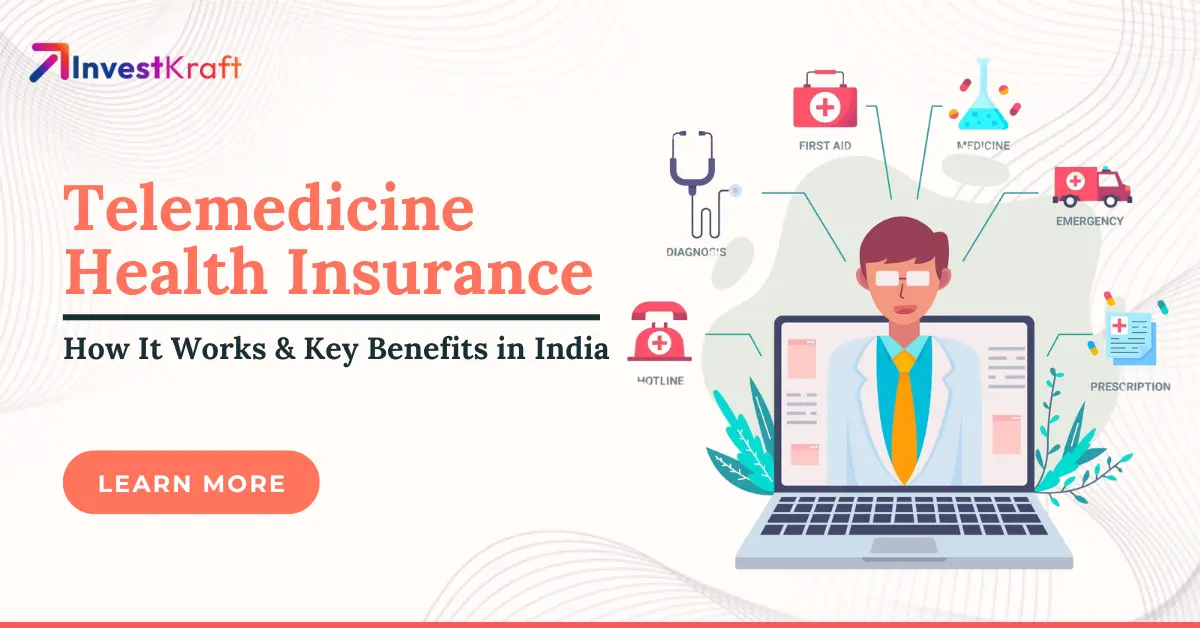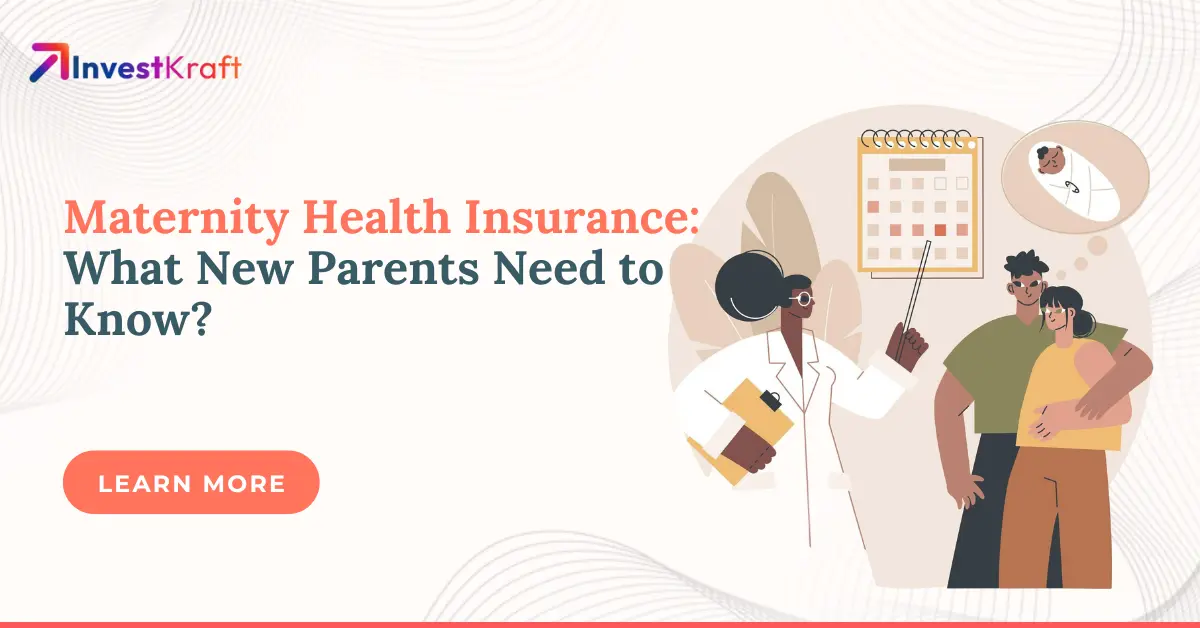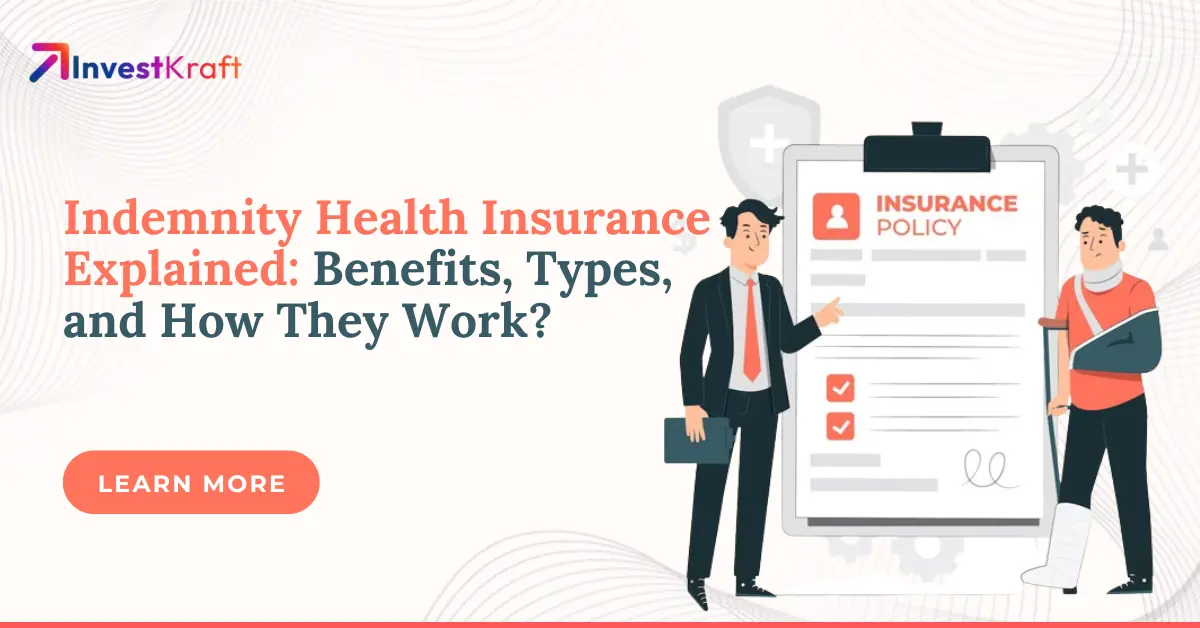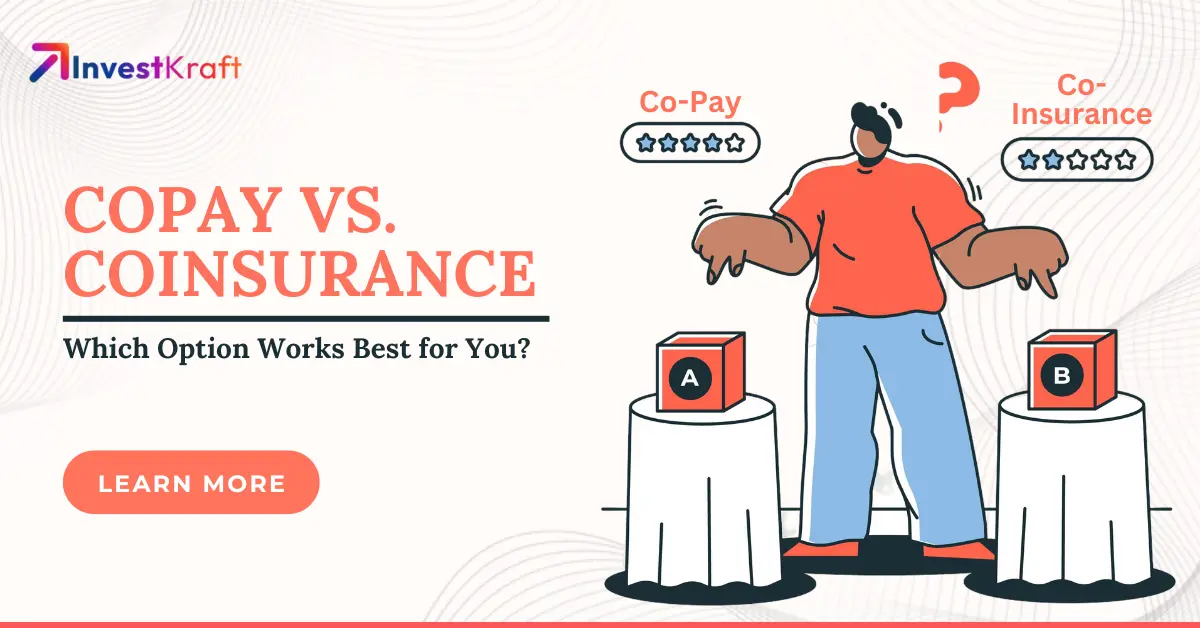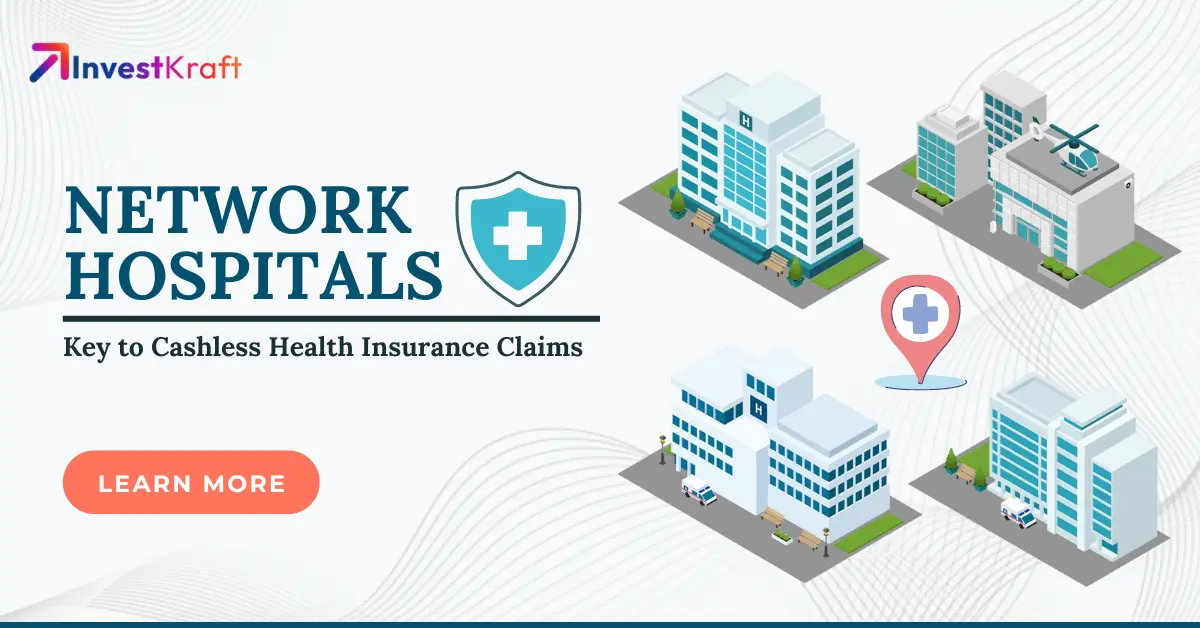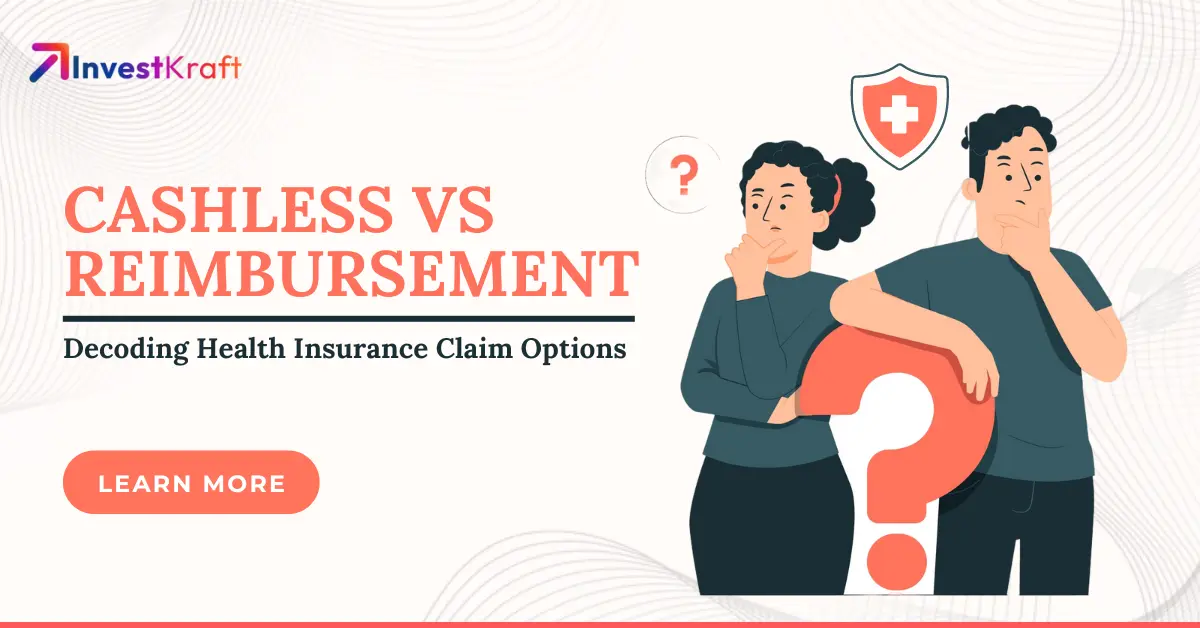What is Critical Illness Insurance and Why You Need It Today?
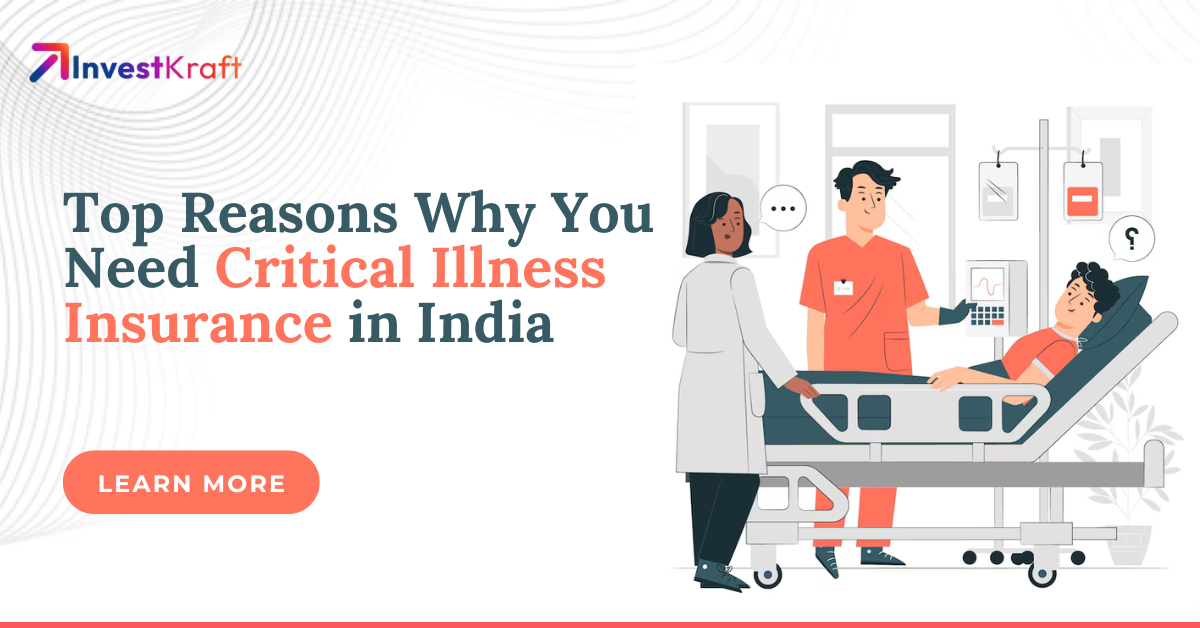
Life is brimming with uncertainties and we frequently overlook our health until an abrupt illness catches us off guard. Consider the case of Anmol, a 35-year-old professional who has always prioritized health. He stays fit through regular exercise and a nutritious diet. Yet, he was unexpectedly diagnosed with a heart condition. The revelation was startling but the real shock came with the staggering medical expenses for treatment, surgery and recovery. Despite having basic health insurance, Anmol faced significant challenges in managing these unexpected costs.
At this point, the importance of critical illness coverage cannot be overstated. While health insurance is vital, critical illness coverage can be transformative, particularly when confronting severe health issues such as cancer, heart attacks or kidney failure. It offers a lump sum payment upon diagnosis, enabling you to handle not only medical expenses but also daily living costs during your recovery journey.
When is critical illness cover most essential? If you are the primary provider for your family and have a hereditary risk of certain diseases or carry existing debts, critical illness insurance can offer crucial financial protection. This article will explore the key situations in which critical illness cover is indispensable, helping you ensure financial stability amid life’s unexpected challenges.
How Do You Define Critical Illness Policy/Rider/Cover?
In today’s world, a critical illness cover/policy/rider is essential due to the escalating healthcare costs. This benefit offers protection against certain life-threatening diseases, ensuring that you are financially secure during tough times. The treatment for such critical illnesses often necessitates frequent hospital visits over extended periods. Beyond hospital bills, there are additional expenses to consider, such as doctor consultation fees and various medical costs.
A critical illness benefit provides a one-time payment that can help cover significant medical expenses. The advantage is that this lump sum is offered in addition to your existing mediclaim or health insurance policy, providing you with extra financial support during challenging times.
Health issues arise suddenly, leaving families to shoulder the financial burden of medical expenses. This can also lead to a loss of income during recovery. Typically, families resort to their hard-earned savings meant for their children’s education or personal retirement to manage these unforeseen costs. However, having critical illness coverage can provide essential financial support exactly when it is needed most.
How Common are Critical Illnesses in India?
Critical illnesses are on the rise in India, posing a significant threat to public health and increasing mortality rates. The growing prevalence of non-communicable diseases (NCDs) like cancer, cardiovascular diseases and diabetes is an urgent issue that demands our attention.
Mortality Statistics
The Indian Council of Medical Research (ICMR) reported that non-communicable diseases (NCDs) were responsible for approximately 61.8% of all deaths in India by 2016, marking a significant rise from 37.09% in 1990. In numerical terms, this translated to nearly 5.8 million lives lost due to severe conditions such as cancer, heart disease and diabetes. Notably, cardiovascular diseases represented 45% of all NCD-related fatalities, chronic respiratory diseases accounted for 22% and cancer contributed about 12%.
Cancer Trends
The rise in cancer is increasingly concerning. Recent reports reveal that between 2012 and 2018, cancer diagnoses surged by 15.7%, with around 1.16 million new cases documented in 2018 alone. Furthermore, the cancer mortality rate has escalated by 12.2%, resulting in nearly 7,85,000 deaths that year.
Cardiovascular Diseases
Cardiovascular diseases (CVD) stand out as one of the primary causes of death in India. From 2007 to 2017, the number of fatalities attributable to CVD escalated by almost 50%, particularly affecting men under the age of 50, who found a notable increase in heart attacks. According to the Global Burden of Disease study, India’s age-standardized CVD death rate is a staggering 272 per 1,00,000 individuals.
Other Critical Illnesses
Chronic kidney disease is a significant health concern, accounting for approximately 2,00,000 deaths each year due to kidney-related conditions. Furthermore, the rising incidence of diabetes adds to this critical health challenge, exacerbating the overall impact of serious illnesses.
List of Covered Critical Illnesses as per IRDAI
This section includes the list of critical illnesses generally covered by health insurance in India.
1. Cancer of Specified Severity
- This condition entails a malignant tumour characterized by unchecked growth and the ability to invade and harm surrounding healthy tissues. Confirmation requires histological evidence. It encompasses various types of cancer, including leukaemia, lymphoma and sarcoma.
- Exclusions: Include tumours identified as carcinoma in situ, non-invasive cancers, specific types of skin, thyroid & prostate cancers, early-stage bladder cancers and tumours associated with HIV infection.
2. Myocardial Infarction (First Heart Attack of Specific Severity)
- A heart attack is primarily defined by the death of heart muscle tissue resulting from insufficient blood flow. It typically presents with symptoms such as chest pain, changes in the ECG and elevated levels of cardiac enzymes.
- Exclusions: Include angina, other acute coronary syndromes or elevated biomarkers occurring in the absence of ischemic heart disease.
3. Open Chest CABG (Coronary Artery Bypass Grafting)
- Surgical interventions to address blocked or narrowed coronary arteries can be performed through sternotomy or minimally invasive techniques. These cases are validated through angiography and assessed by a cardiologist.
- Exclusions: Angioplasty and various intra-arterial procedures.
4. Open Heart Valve Replacement/Repair
- Surgical intervention to replace or repair malfunctioning heart valves is necessary. This process involves echocardiography and must be validated by a specialist.
- Exclusions: Include catheter-based procedures such as balloon valvotomy.
5. Coma of Specified Severity
- A condition of unconsciousness lasting a minimum of 96 hours, necessitating life support and resulting in irreversible neurological impairment.
- Exclusions: Comas resulting from alcohol or substance abuse.
6. Kidney Failure Requiring Regular Dialysis
- Chronic and irreversible kidney failure that necessitates ongoing dialysis or a transplant, as confirmed by a specialist.
7. Stroke Resulting in Permanent Symptoms
- A cerebrovascular event resulting in lasting neurological damage, substantiated by clinical symptoms and imaging studies.
- Exclusions: Transient ischemic attacks, traumatic brain injury, and vascular diseases affecting the eye.
8. Major Organ/Bone Marrow Transplant
- In cases of end-stage organ failure, vital organ transplants, including the heart, lungs, liver, kidneys, and pancreas, are performed. This also encompasses bone marrow transplants.
- Exclusions: Include all other types of stem-cell transplants as well as islets of Langerhans transplants.
9. Permanent Paralysis of Limbs
- A total and irreversible loss of function in two or more limbs must be confirmed as permanent by a specialist for a duration exceeding three months.
10. Motor Neuron Disease with Permanent Symptoms
- Progressive degeneration of motor neurons leading to functional impairment for a minimum of three months encompasses conditions such as ALS and spinal muscular atrophy.
11. Multiple Sclerosis with Persisting Symptoms
- The MRI confirms the diagnosis, revealing characteristic findings, alongside clinical impairment that has persisted for a minimum of six months.
- Exclusions: Include neurological damage resulting from systemic lupus erythematosus (SLE) or HIV.
12. Benign Brain Tumor
- Imaging confirms the presence of non-cancerous yet life-threatening brain tumours. These tumours must either result in lasting neurological deficits or necessitate surgical or radiological intervention.
- Exclusions: Include cysts, granulomas, pituitary tumours, and tumours impacting the skull bones or spinal cord.
13. Blindness
- Complete and permanent vision loss in both eyes, as verified by visual acuity assessments.
14. End-Stage Lung Failure
- Chronic respiratory failure is diagnosed through specific tests, which necessitate supplemental oxygen and an analysis of arterial blood gases.
15. End-Stage Liver Failure
- Chronic liver failure characterized by jaundice, fluid retention (ascites) and hepatic encephalopathy.
- Exclusions: Any failures resulting from substance abuse, including drugs or alcohol.
16. Loss of Speech
- Complete and permanent loss of the ability to speak for no less than 12 months, substantiated by documentation from an ENT specialist.
- Exclusions: Psychiatric causes.
17. Loss of Limbs
- A permanent physical disconnection of one or more limbs resulting from injury or illness.
- Exclusions: Include self-inflicted injuries as well as abuse of alcohol or drugs.
18. Major Head Trauma
- Injury to the head has occurred accidentally, leading to lasting neurological impairment. An evaluation conducted after three months reveals a significant impact on daily living activities.
- Exclusions: Injuries to the spinal cord.
19. Primary (Idiopathic) Pulmonary Hypertension
- A specialist has diagnosed right ventricular enlargement, accompanied by a pulmonary artery pressure exceeding 30 mmHg, resulting in a permanent impairment classified as NYH Class IV.
- Exclusions: Include pulmonary hypertension arising from alternative factors, such as respiratory conditions or cardiovascular diseases.
20. Third-Degree Burns
- As verified by standardised assessment charts, Burns affect a minimum of 20% of the body surface area.
Critical Illness Cover Claim Process
Grasping the claim-filing process is essential for meeting the eligibility requirements and submitting all the necessary documentation to substantiate your claim. Below are the crucial steps to follow -
- Verify Your Critical Illness Coverage - Before submitting a critical illness claim, it is essential to thoroughly examine your critical illness coverage to confirm your eligibility. Make sure your policy is active and that your premium payments are current.
- Complete the Claim Form - To complete the claim form, start by reaching out to your insurance company to acquire the required claim document. Ensure that you fill out the form with precision, including all requested information such as your personal details, policy number and the specific critical illness for which you are filing a claim.
- Collect Supporting Documents - Ensure that you include all the relevant supporting documents with your claim form. This should encompass lab test results, X-rays, MRIs, CT scans and medical reports. Providing extensive evidence is crucial for strengthening your claim. Be ready to promptly supply any additional information requested by the insurance company.
- Complete the KYC and Bank Details Section - In the claim form, specify how you would like to receive your claim and provide the necessary KYC information.
- Submit Your Claim - After filling out the claim form and gathering all required documents, promptly submit your claim to the insurance company. Remember to retain copies of all submitted materials for your records.
- Anticipate Claim Processing - The duration of the claims process can range from two to eight weeks, influenced by the necessity for further information. It is important to note that claims for policies active for less than a year may require additional time, as insurers meticulously evaluate the potential for undisclosed health conditions during the application phase.
Factors That Affect Claim Approval for Critical Illness Cover
Several crucial factors influence the claim approval process for critical illness coverage -
- Pre-existing Conditions - Such policies usually have a 30 to 90-day waiting period for claims related to pre-existing conditions. Afterwards, some insurers may cover them while others exclude or charge higher premiums.
- Exclusions - Revise the exclusion in your policy. Conditions like HIV/AIDS, self-inflicted injuries and high-risk activities may not be covered. Smoking and alcohol abuse can also result in denied claims.
- Waiting Period - Critical illness policies have a waiting period, typically 30 days or more, during which claims are not accepted to avoid opportunistic purchases after a diagnosis.
- Survival Period - Policies often require the insured to survive 30 days after a critical illness diagnosis for claim eligibility. If death occurs during this period, the claim may be denied.
- Occupation and Lifestyle Factors - Certain high-risk occupations may impact eligibility or result in higher premiums. Lifestyle factors such as smoking, alcohol consumption, or engaging in extreme sports can also affect claim approval and premiums.
- Claim Submission Process - Adhering to the claim submission process is crucial for getting your claim approved. This includes submitting the required documents like diagnosis reports, treatment records, and claim forms within the stipulated time frame.
- Verification and Investigation - Insurance companies may conduct verification and investigation to validate the claim. This may include seeking additional information or documents from the insured or the treating doctor. Providing accurate and complete information can help expedite the claim approval process.
- Policy Terms and Conditions - Your claim will be approved only if you meet certain criteria or terms and conditions mentioned in the policy. These criteria conform to the specific definitions of critical illnesses covered by the insurer. Familiarizing yourself with these definitions can help you understand the scope of coverage and avoid any surprises during claim settlement.
How to Choose the Right Critical Illness Cover?
Selecting the appropriate critical illness coverage is essential for ensuring financial stability during significant health challenges. Here are key factors to take into account when choosing a critical illness cover -
- Coverage Scope - It is essential to select a policy that encompasses a comprehensive array of critical illnesses. Seek out plans that include significant conditions such as cancer, heart disease, stroke and organ failure. The broader the spectrum of illnesses covered, the greater the protection you will attain.
- Sum Insured - Select a sum insured that consistently covers potential medical expenses and financial obligations. Factor in the increasing costs of healthcare and opt for an amount that ensures ample financial protection in the event of a critical illness diagnosis.
- Premium Costs - Evaluate premiums across various policies, taking into account the level of coverage provided. It is important to find an affordable premium that does not sacrifice essential coverage. Keep in mind that opting for higher coverage limits usually results in increased premiums.
- Waiting and Survival Periods - It is essential to grasp the concept of the waiting period, which is the interval before your coverage activates and the survival period, which is the duration you must endure post-diagnosis to be eligible for claims. Opting for shorter periods is advantageous, as they facilitate faster access to benefits.
- Renewability Options - Choose plans that provide lifelong renewability or high age limits for renewal. This guarantees ongoing coverage as you grow older, which is especially crucial since the risk of critical illnesses tends to rise with age.
- Inclusions and Exclusions - Take the time to thoroughly examine what is covered and what is not in the policy. Certain plans may exclude pre-existing conditions or particular illnesses, potentially resulting in unforeseen gaps in coverage during critical times when you need it the most.
- Claim Process - Delve into the insurance provider's claims process. An efficient and effortless claims procedure is crucial for receiving prompt assistance during a health crisis. Seek out insurers known for their excellent reputation in customer service and effective claims management.
- Health Assessment Requirements - It is crucial to understand any health assessments or medical examinations necessary before purchasing the policy, Your current health condition can significantly affect both your eligibility and premium rates, so it is vital to provide accurate and complete information.
Common Critical Illness Cover Add-On Riders
Critical illness insurance policies frequently include supplementary riders or add-on covers that enhance your protection. Below are some of the most common add-on covers for critical illness insurance -
- Hospital Cash Rider - This rider offers a fixed daily benefit while you are hospitalized for covered critical illness. This lump sum payment can assist in covering additional expenses such as meals and transportation during your hospital stay.
- Maternity Cover - Much like maternity rider, this add-on encompasses expenses related to prenatal and postnatal care, childbirth, hospitalization and ambulance services. It can be incorporated into both individual and family critical illness plans.
- Personal Accident Cover - This supplementary insurance usually provides a range of advantages, such as one-time payouts for death or disability resulting from an accident, reimbursement for medical expenses and often weekly benefits for hospitalization due to an accident.
- Daily Cash Allowance - This add-on offers a guaranteed daily cash benefit for every day you are hospitalized due to a covered critical illness. It assists in covering expenses such as meals and transportation while you are receiving care in the hospital.
- Home Healthcare Cover - This add-on provides comprehensive coverage for medical treatment at home, encompassing doctor visits, diagnostic tests and nursing fees. It guarantees that you receive the essential care you need without the inconvenience of travelling to a hospital.
- Ayurvedic/Homoeopathic Cover - For individuals who favour alternative therapies, this add-on offers financial assistance for Ayurvedic and Homeopathic treatments, It encompasses consultation fees, diagnostic tests and treatment costs.
- Restoration of the Sum Insured - This add-on effectively replenishes the sum insured once it has been depleted, guaranteeing uninterrupted coverage even after incurring substantial medical expenses related to a critical illness.
- OPD Cover - This add-on provides reimbursement for expenses related to outpatient consultations and follow-up visits, making it especially advantageous for managing chronic conditions that necessitate regular doctor appointments.
- Health Prime Rider - This add-on enables consultations via telephone or video calls and encompasses in-person visits to affiliated hospitals, along with diagnostic tests and annual health check-ups.
- Room Rent Waiver - This enhancement either raises the room rent limit or eliminates it, enabling you to select a private room without the stress of extra expenses during hospitalization for a critical illness.
Conclusion
In an era where critical illnesses are increasingly common, critical illness coverage stands out as an essential financial safeguard. The growing incidence of non-communicable diseases such as cancer, heart disease and stroke highlights the urgent necessity for this type of protection. Although health insurance is vital, critical illness coverage offers a game-changing advantage by providing a lump sum payment upon diagnosis. This financial support allows you to effectively manage medical expenses and cover daily living costs during your recovery journey.
Understanding the essential factors that impact claim approval - such as pre-existing conditions, waiting periods and your occupation or lifestyle - empowers you to make well-informed choices when selecting critical illness coverage. Take into account the breadth of coverage, sum insured, premium rates, waiting & survival periods, options for renewability, inclusions & exclusions, the claim process, health assessment requirements and popular add-on riders to identify the policy that best meets your needs.
Keep in mind that critical illness cover goes beyond mere financial protection; it offers invaluable peace of mind. By choosing a robust critical illness policy, you safeguard both yourself and your loved ones against the severe financial burdens that accompany a serious illness, paving the way for a more secure and stable future.
Frequently Asked Questions (FAQs)
Q: What is the critical illness benefit of health insurance?
A: The critical illness benefit in health insurance offers a one-time lump sum payment upon the diagnosis of certain severe illnesses, such as cancer or heart disease. This financial assistance alleviates the burden of medical expenses, compensates for lost income and addresses various costs related to treatment, enabling the policyholder to concentrate on their recovery without stressing about finances.
Q: How much critical illness to cover?
A: To establish the appropriate level of critical illness coverage, start by multiplying your annual income by the number of years you anticipate being unable to work because of illness. Furthermore, it is essential to account for future expenses such as medical bills, household obligations and the needs of dependents to guarantee comprehensive financial protection.
Q: What is included in critical illness cover?
A: Critical illness insurance typically offers coverage for a variety of severe illnesses, including cancer, heart attacks and organ failures. Most policies provide a lump sum payout upon diagnosis, which can be utilized for medical expenses, recovery costs and various financial responsibilities.
Q: What are the disadvantages of critical illness insurance?
A: Critical illness insurance comes with several drawbacks such as significantly higher premiums compared to standard health insurance, possible exclusions for pre-existing conditions and restrictions on claims that cover only certain illnesses. Furthermore, many policies permit only a single claim during the coverage period, potentially leaving individuals without financial support for multiple health challenges.
Q: What is the age limit for critical illness insurance?
A: The age limit for obtaining critical illness insurance usually spans from 18 to 65 years. While some insurers might permit renewals beyond this age threshold, they often impose stricter conditions or elevated premiums for older applicants due to the heightened health risks associated with ageing.
Q: What is the waiting period for critical illness?
A: The waiting period for critical illness insurance usually spans 30 days from the start date of the policy. During this timeframe, no claims can be submitted for any diagnosed conditions, thereby ensuring that pre-existing illnesses are not immediately covered upon the policy’s purchase.
Q: How to calculate critical illness cover?
A: To determine the amount of critical illness coverage you need, take into account your monthly expenses, potential loss of income and the medical costs related to treatment. A widely used approach is to multiply your annual income by the number of years required for recovery while also factoring in inflation and unforeseen expenses.
Q: Do I need critical illness insurance?
A: The necessity of critical illness insurance hinges on your individual health risks, family history and financial circumstances. This type of insurance serves as an essential financial safety net, protecting you against the burdens of significant medical expenses and potential loss of income resulting from severe health conditions such as cancer or heart disease.
Q: What age should you get critical illness cover?
A: The optimal age for acquiring critical illness coverage generally falls between 30 and 50 years. At this stage, premiums tend to be more affordable due to your younger and healthier status. Nonetheless, individuals with a family history of critical illnesses should seriously contemplate securing coverage at an earlier age to reduce potential future risks.
Q: Can I take critical illness cover separately?
A: Yes, you can purchase critical illness coverage independently from other insurance policies. Numerous insurers provide critical illness riders that can be attached to your current life or health insurance plans, offering enhanced protection for certain severe conditions.
Q: What is the cost of critical illness treatment in India?
A: The expenses for treating critical illnesses in India can differ significantly depending on the specific illness and type of treatment required. Generally, the costs can range from 1 lakh rupees to more than 10 lakh rupees, especially for severe conditions like cancer or heart disease. This variation is influenced by factors such as the choice of hospital and the complexity of the treatment involved.
Q: Which is better life insurance or critical illness?
A: The decision between life insurance and critical illness coverage hinges on personal circumstances. Life insurance offers financial protection to your beneficiaries in the event of your passing, while critical illness cover delivers a lump sum upon the diagnosis of certain illnesses, helping to alleviate medical expenses and compensate for lost income during the recovery process.
Q: Is kidney disease a critical illness?
A: Yes, kidney disease can qualify as a critical illness under certain conditions specified in an insurance policy. This usually encompasses severe or chronic kidney disorders that necessitate extensive medical treatment or result in lasting disability.
Q: How much critical illness coverage is sufficient?
A: The adequacy of critical illness coverage is influenced by individual financial responsibilities and lifestyle choices. Typically, a coverage amount ranging from 10 lakh rupees to 20 lakh rupees is advisable to effectively address potential medical expenses and compensate for lost income while recovering from severe illnesses.
Q: What is the maximum term for critical illness coverage?
A: The maximum duration for critical illness coverage usually spans from 10 to 30 years, varying by insurance provider. While certain policies may provide lifetime coverage options, these are relatively uncommon and generally associated with higher premiums.
Q: Does critical illness cover death?
A: No, critical illness insurance does not offer death benefits. Instead, it provides a lump sum payment if you are diagnosed with a qualifying critical illness but it does not disburse any funds in the event of death.
Q: Can a critical illness claim be denied?
A: Yes, insurers can reject critical illness claims if the specific illness is not covered by the policy, if it falls under the listed exclusions or if the waiting period has not been served. Additionally, claims may be denied due to any non-disclosure of pre-existing conditions.
Q: What is the maximum sum assured for critical illness?
A: The maximum sum for critical illness insurance varies up to 25 crore rupees. The right sum depends on monthly expenses, liabilities, treatment costs and medical history.
Q: Does critical illness cover broken bones?
A: No, critical illness insurance generally does not encompass broken bones or other non-life-threatening conditions. Its primary purpose is to offer financial security in the face of severe, life-threatening illnesses such as cancer, heart attacks and organ failures, which necessitates costly treatment.
Q: What are the disadvantages of critical illness insurance?
A: A significant drawback of critical illness insurance is that it offers a one-time lump sum payment only upon the diagnosis of a covered illness, rather than covering ongoing medical expenses. Additionally, there is a waiting period before the coverage becomes effective. Premiums can be quite steep, particularly for older individuals, and the coverage is restricted to certain illnesses with various exclusions.

Author: Abhik Das
Abhik Das is a versatile content writer with over 5 years of experience crafting engaging and informative content across diverse industries. His expertise spans the fields of ed-tech, pharmaceuticals, organic food, travel, sports, and finance.
Here's what sets Abhik apart:
Content Versatility: Able to adapt writing style and tone to suit various audiences and content needs.
SEO Proficiency: Creates content optimized for search engines, ensuring discoverability and organic traffic.
Deep Research: Conducts thorough research to ensure content accuracy and credibility across complex topics.
Engaging Storytelling: Captures reader interest with clear, concise, and compelling writing.
Abhik's diverse background empowers him to deliver insightful content across a wide range of subjects. Whether you're seeking engaging explainer pieces on the latest financial trends, informative guides to organic food choices, or captivating travelogues, Abhik has the expertise to craft content that resonates with your audience.








